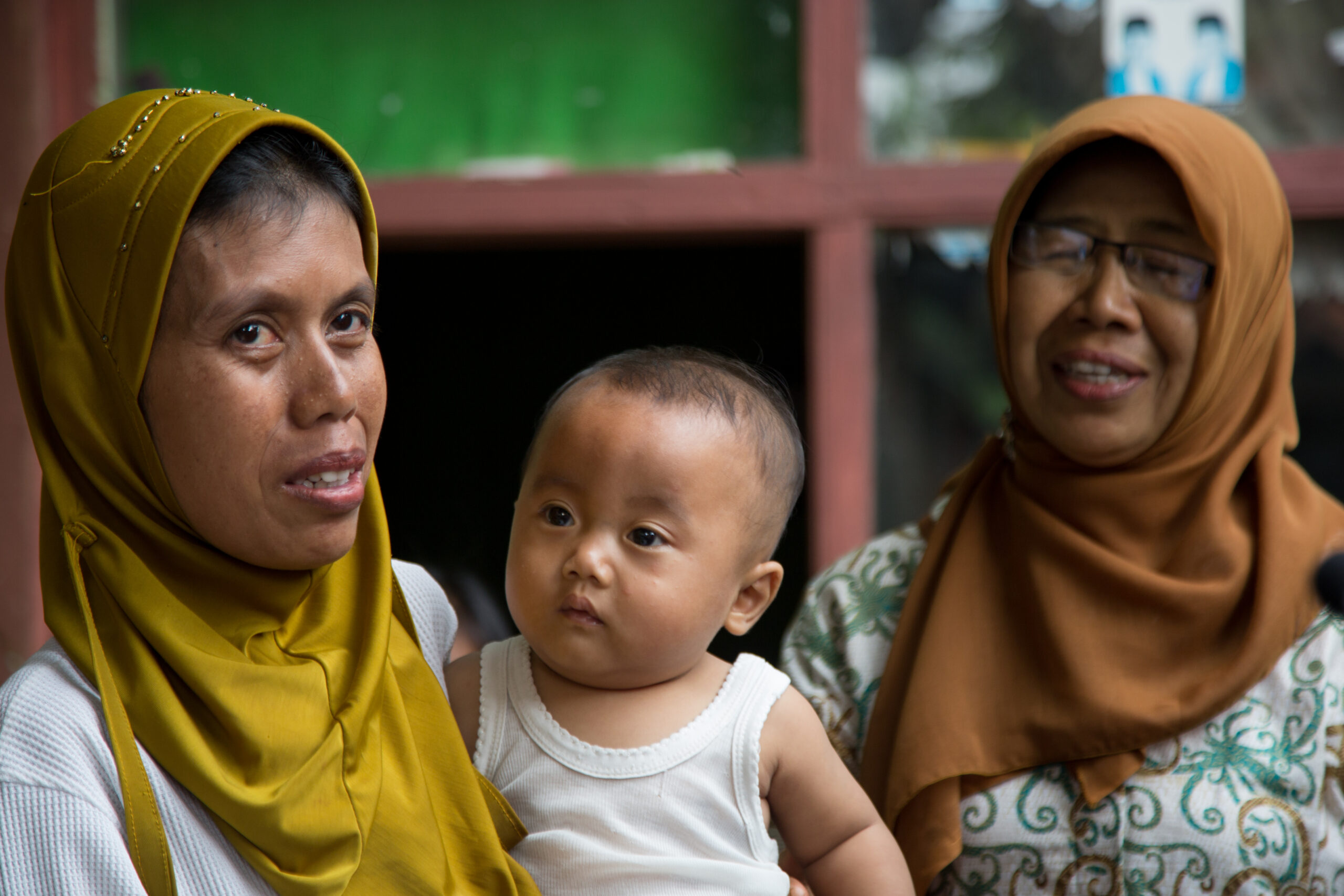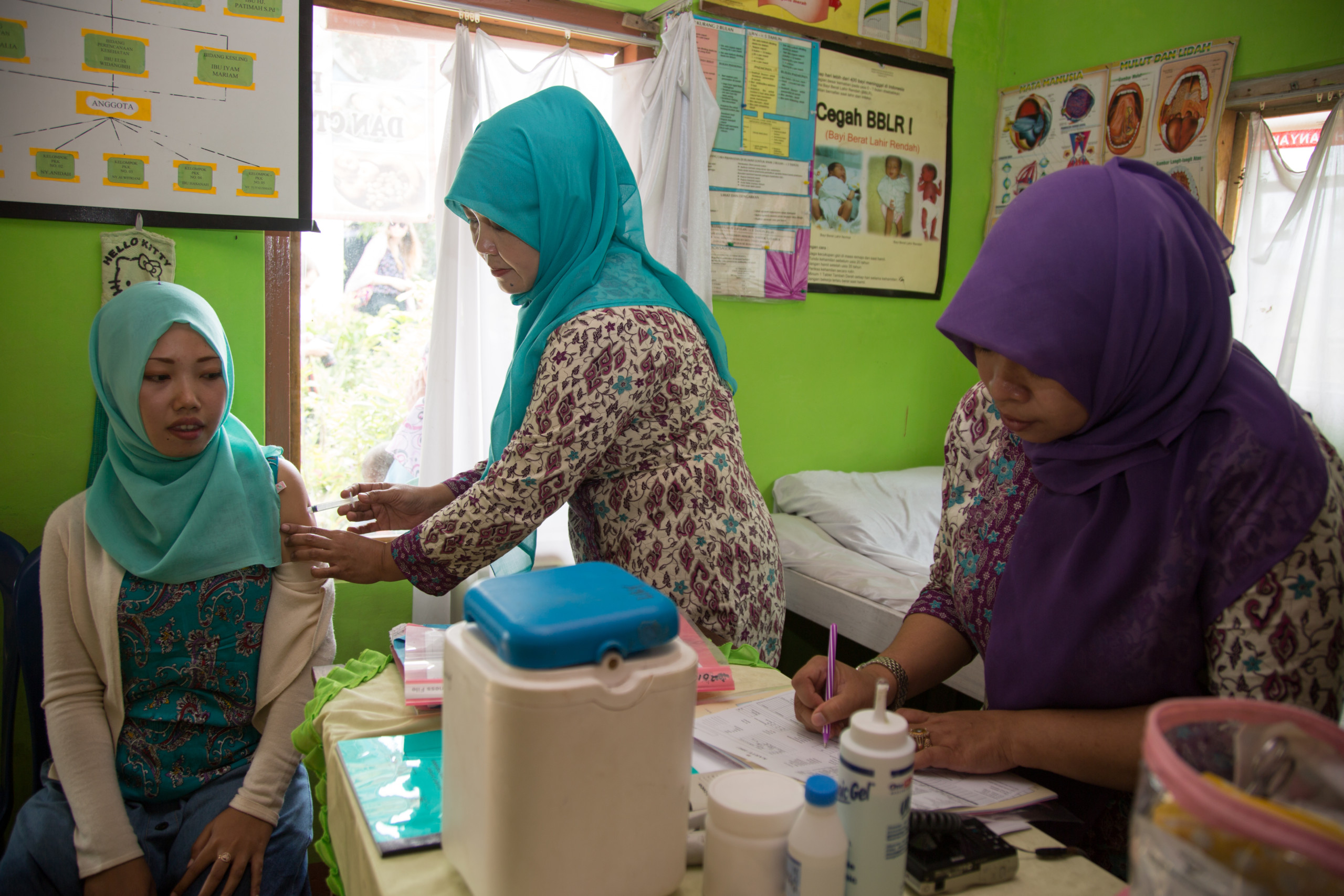Although Indonesia has not been bundled together with the BRICS countries, it has maintained a growth rate of 5.2% during the last decade and has become one of the world’s largest middle income countries. This has permitted swathes of the population to be lifted out of poverty and for the middle class to thrive.
Nevertheless, pockets of poverty continue to exist across the country’s territory which is composed of thousands of islands spanning 1,919,440 square kilometers. Moreover, as increased affluence can be noted in urban areas, the clash with those left behind is also becoming more apparent. For instance, while Indonesia’s GINI inequality index lay at 0.37 in 2012 it rose to 0.41 in 2013, reflecting heightened income disparities.[1]
These differences are also reflected in the health sector: while 1 in 3 children under the age of five are stunted, 40% of these reside in rural areas. In a similar vein, 8 in 10 births are attended by health workers, but in seven Eastern provinces 1 in 3 births take place without skilled assistance.[2] This shows that economic growth has not resulted in improved health care access for the less wealthy and most remote.
For Indonesia to escape the middle income trap it must ensure that its entire population can access basic social services such as health care. Even if the middle class increasingly has the financial wherewithal to opt out of public services, it must keep universal health care high on the political agenda in order to sustain the progress made to date and to continue reaching the poorest, most isolated and most vulnerable.
Indonesia’s plan to ensure universal health coverage for all by 2019 will take care of the 28 million poor who have not directly benefited from the country’s growing affluence. Moreover, it will protect those who find themselves in a precarious situation and would face certain poverty were they to be ridden with an illness. This is a very positive development and should serve as an example to other middle income countries in the region.
There is another side to this story: as Indonesia is seen as sufficiently wealthy, the financial support made available to it from international institutions and organizations will also dwindle. The EU ended its DCI funding to Indonesia in 2014 while it has equally reached graduating status for GAVI and the Global Fund. This means that vaccines and treatment for TB, AIDS and Malaria will have to be financed with national resources rather than via external aid.
Nevertheless, a number of hurdles stand in the way of self-sufficiency. Indonesia still faces great challenges regarding both its fight against communicable and non-communicable diseases and the strengthening of its health system. In fact, 1.8 million Indonesian children are not fully immunized (3rd highest number in the world) and the country is confronted with a 57% funding gap for TB which is bound to increase once external aid is withdrawn. Indonesia needs to address these deficiencies before it graduates from external support.
This explains why Seth Berkley, the CEO of GAVI, the Vaccines Alliance has explicitly called on donors to increase their allocations at the upcoming replenishment conference in January 2015. Given that 22 middle income countries will be graduating from GAVI support in 5 years’ time, a last push is needed to reach those excluded from past immunization efforts. The same principle applies for AIDS, TB and Malaria- if graduating countries are not guided to financial self-sufficiency in the health sector now, millions of underprivileged Indonesians will risk being left behind in the next decade.





